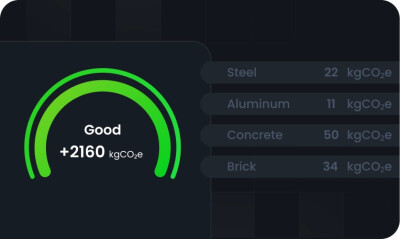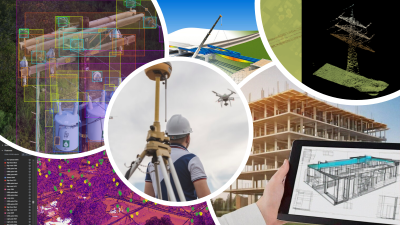Earlier this month, Poliark, a relatively new technology company based in New York, announced the launch of its first subscription-based product, Kend. Built on generative artificial intelligence technology, Kend is designed for architects and engineers, providing a conversational AI assistant to create 3D models from scratch or from 2D sketches, all using simple text inputs.
Poliark was founded in 2022 (with R&D work starting in 2021) by Eda Erol, the company’s CEO. She has a background in architecture in urban design, while also subsequently earning a master’s degree in GIS technologies. It was during this time that she first started to see issues with software for architects around CAD and BIM, and she wondered if AI could do anything to help solve it. Erol recently spoke with Geo Week News about this thought process and how she believes Kend can work to solve some of these problems in the industry.
During the conversation, Erol provided a demonstration of how Kend works in its current beta, where any potential user can try the conversational AI. In the demonstration, she used prompts like “Design a three-bedroom, two-bathroom single floor house,” and was given a floor plan within about 30 seconds. From there, she was able to iterate on the design, dragging to change things like door placement while also having the ability to change things like the type of door. Additionally, she was able to give a prompt to turn the floorplan into a 3D model in modern architectural style, accounting for things like private backyards and tree types.
Erol indicates that while the product is still in beta, Poliark has been working with architectural and engineering firms to ensure the product gives them the tools they need to be successful. Asked about the feedback she’s received the most often and what she sees as what the industry is looking for from this type of solution, she said, “The most important thing for them is to not only use it from scratch, but also be able to integrate their existing structures within a system.” They’ve added that capability, giving users the ability to generate 3D models “within seconds,” even for existing buildings.
In addition to the generative design capabilities, there are two more key features included within Kend, according to Erol. One of those is the enhanced collaboration which can take place while using the platform. This is largely based off of Kend being a browser-based application which lives in the cloud, meaning different stakeholders can work off of the same model using just a link. We’re seeing more platforms move to the cloud and browsers for this very reason. Erol also notes that they have options for education purposes too. “If you’re an architectural professor, you can invite all of your students within a single studio and then track them all within a single space.”

Alongside the collaboration, Kend has built-in tools to track carbon emissions with different designs based on the materials being used. The platform includes 500 different materials within its catalog, which of course is useful for iterating potential designs to make sure it looks and feels as wanted. To go with the design benefits, the Kend also holds the carbon data for different materials, so when a change is made the user can see how it impacts their overall carbon footprint for the design. Given the regulations coming around the world for tracking carbon in every stage of a project, it’s helpful to have that information readily available.
Ultimately, this is the kind of product we can expect to see more of in the coming years as generative AI continues to refine. There are ways it can be used in most every industry, for better or for worse. Here, there are a lot of positives, particularly for smaller and mid-sized design firms. This opens up the possibility for, say, a solo practitioner to land more projects as the early parts of design phases can be outsourced to Kend, with the architect then iterating from there. As noted, they can also take existing designs and easily convert them into 3D models using this artificial intelligence.
On the other hand, there are concerns with AI in every industry, architecture included. In this case, a concern could be that, since these models will largely be trained on similar – if not the exact same – data, outputs could lead to similar looking buildings showing up everywhere. Geo Week News asked Erol about this, and she said that in her eyes tools like Kend will only be part of the puzzle.
"We don’t see a world where AI will ever totally replace the design systems. It’s not there to replace architects and engineers. It’s there to save their time. If you’re going to build that structure, you need licensed professionals. At the end of the day, it will be changed by the architect. If the architect sees the design by the AI and thinks it’s okay, then it’s okay. If an architect looks at it and thinks, This is boring. This is the same thing we always see, then they have the capacity and the ability to modify it."






